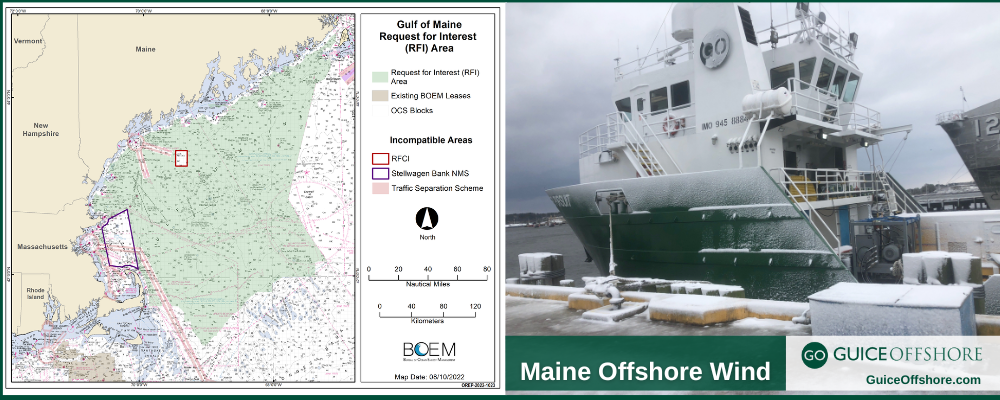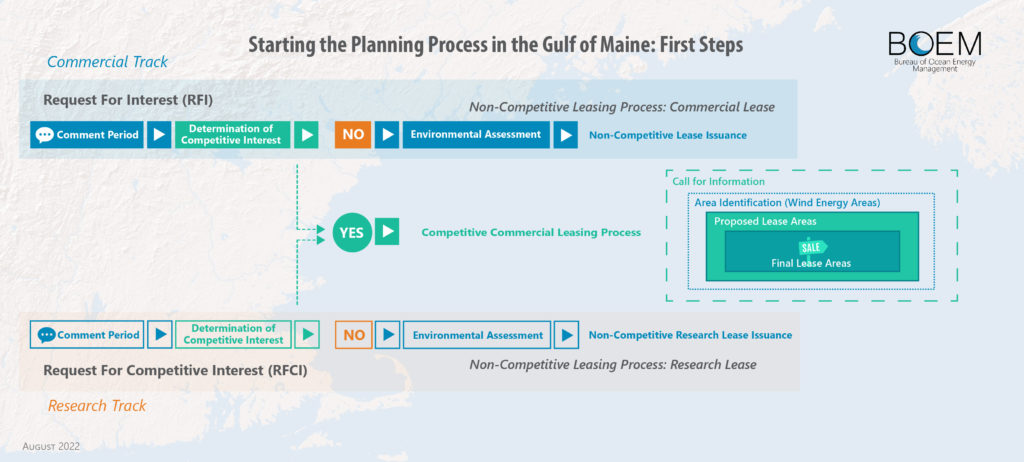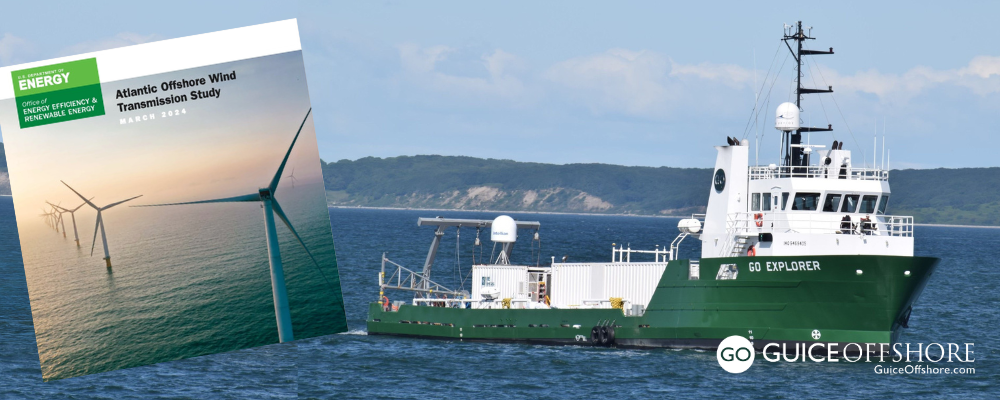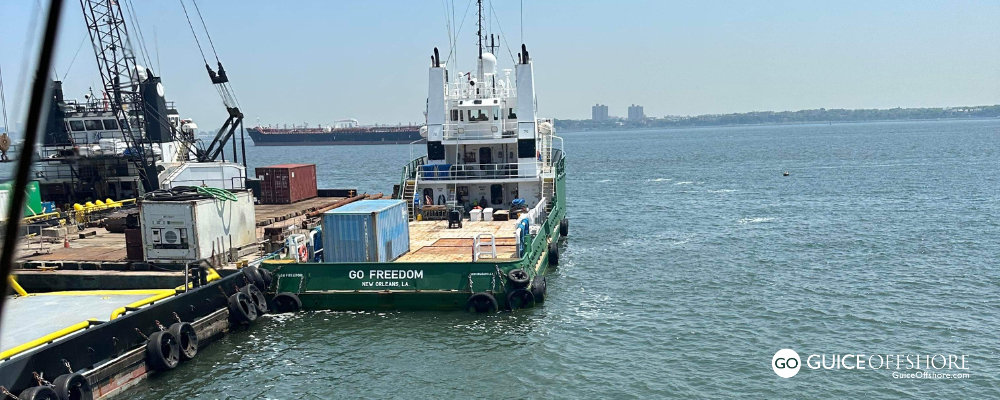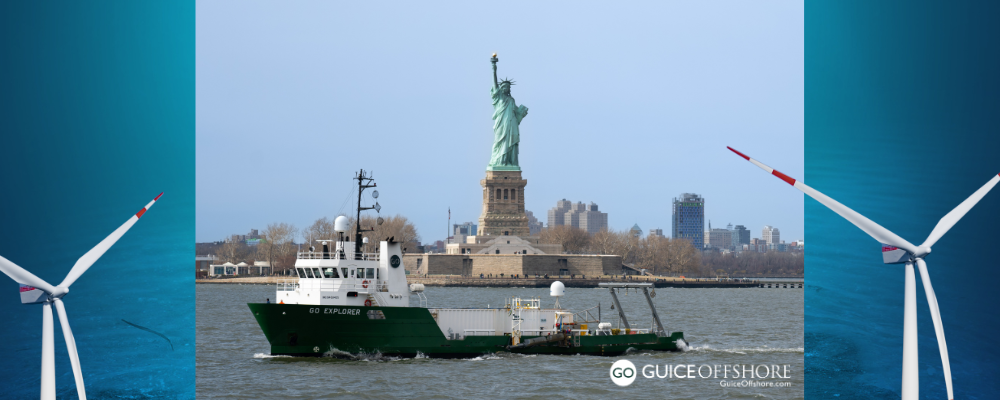As part of the federal government goal of deploying 30 gigawatts of offshore wind energy capacity by 2030, Guice Offshore noted that the U.S. Department of the Interior announced on August 18, 2022 the next steps in the process to bring offshore wind energy to the Gulf of Maine.
The following day, the Bureau of Ocean Energy Management (BOEM) made available a Request for Interest (RFI) and Request for Competitive Interest (RFCI) in the Federal Register for public comment. The publication of these Federal Register notices on August 19, 2022, initiated two separate 45-day comment periods that will close on Monday, October 3, 2022, representing one of the many steps the BOEM has taken to acquire the best available information and knowledge for its decision making. The agency explained that it has done extensive work to emphasize the use of science and has evolved its processes upon receiving stakeholder input to promote transparency prior to identifying wind energy areas for leasing that result in the least impact on other ocean users.
“As we work to spur offshore wind development and deploy floating offshore wind technology nationwide, BOEM recognizes the rich cultural heritage and ecological importance of the Gulf of Maine region, which is why we are using the best available science and traditional knowledge from ocean users and other stakeholders in our planning and leasing process,” said BOEM Director Amanda Lefton. “We are committed to a transparent, inclusive and data-driven process that avoids or minimizes potential conflicts with marine life and ensures all ocean users flourish.”
Over the past year, the American offshore wind industry has celebrated the groundbreaking of the nation’s first two commercial-scale, offshore wind projects in federal waters. By 2025, the Interior Department plans to hold up to five additional offshore lease sales and complete the review of at least 16 plans to construct and operate commercial, offshore wind energy facilities, which would represent more than 22 gigawatts of clean energy for the nation.
In addition, investments from the recently signed Inflation Reduction Act will lower energy costs by hundreds of dollars per year for families by making clean energy more affordable and accessible. The Act will create good-paying jobs by spurring an unprecedented expansion in clean energy deployment and manufacturing of more than 120,000 wind turbines.
Learn more including how to comment on the following pages:
Guice Offshore, widely considered to be the U.S Flag leader in the operation of dynamically positioned Jones Act-qualified mini-supply vessels and compact, cost-effective multi-purpose vessels for specialty markets such as offshore wind energy, is playing a pivotal role in providing one of the primary needs in the offshore wind supply chain–offshore supply vessels for a multitude of needs, including crew transfer, equipment transport and subsea surveying. Guice Offshore has worked extensively in the northeastern United States on offshore wind surveys and related jobs for several years now.
Request for Interest for Maine Commercial Offshore Wind Planning and Leasing
The RFI is the first step in BOEM’s commercial planning and leasing process to identify the offshore locations that appear most suitable for development, taking into consideration potential impacts to other resources and ocean users. Its purpose is to gauge interest in the development of commercial wind energy leases within the RFI Area, which consists of about 13,713,800 acres in the Gulf of Maine.
Through the RFI, BOEM seeks feedback from stakeholders, industry, Tribes, ocean users, and others regarding the location and size of specific areas they wish to be included in (or excluded from) a future offshore wind energy lease sale, along with other planning considerations.
This information will be used to narrow the area to be considered for offshore wind development as BOEM moves forward with the Gulf of Maine planning and leasing process.
Request for Competitive Interest for Maine’s Research Lease
The RFCI is the next step in processing the State of Maine’s application for a research lease and provides notice of the proposed research area that Maine requested.
The BOEM is issuing this RFCI because the Outer Continental Shelf Lands Act and implementing regulations require that BOEM determine whether competitive interest exists in any area that is the subject of an unsolicited lease request.
If BOEM does not receive any indications of competitive interest for a lease in response to this notice, the agency will move forward with the research application. However, if one or more indications of competitive interest from qualified entities are submitted, BOEM may decide to move forward with the lease issuance process using competitive leasing procedures.
Maine’s application requests 9,700 acres on the Outer Continental Shelf more than 20 nautical miles off the Maine coast. If developed, the research array would comprise up to 12 floating offshore wind turbines capable of generating up to 144 megawatts of renewable energy.
The BOEM is inviting submission of indications of commercial interest, as well as comments from interested and affected parties.
The RFCI Area (68,320 acres) expands upon Maine’s requested research lease area to allow future siting flexibility to avoid or minimize conflicts with existing ocean users should a lease (research or commercial) be issued. Only a project that is approximately the size of Maine’s research lease proposal (i.e., no more than 10,000 acres and no more than 12 floating turbines) and provides a conceptual framework for addressing the research priorities identified in the RFCI will have the potential to move forward.
Importance of Best Available Science and Stakeholder Engagement
BOEM continues to work closely with its federal, Tribal and state partners to employ the best available science, information and knowledge. This collaborative effort will identify the least conflicted areas that still deliver the renewable energy capacity necessary to meet the targets set by the Biden Administration and state renewable energy goals.
The BOEM is funding several priority studies to inform any potential commercial leasing and development in the Gulf of Maine.
The BOEM has invested $80 million to collect baseline information in the Atlantic Ocean and Gulf of Maine to date. Recently funded studies include:
- BOEM Ecosystem Based Management Study: Standardizing Integrated Ecosystem Based Assessments (SIEBA)
- Ecological Baseline Study of the U.S. Outer Continental Shelf Off Maine
- Comprehensive Assessment of Existing Gulf of Maine Ecosystem Data and Identification of Data Gaps to Inform Future Research
In conjunction with the SIEBA study, BOEM will be working with the National Oceanic and Atmospheric Administration’s National Centers for Coastal Ocean Science to develop ecosystem-based models to support and inform BOEM’s identification of lease areas.
More information, including maps of the RFI and RFCI areas and how to comment, can be found on BOEM’s Gulf of Maine webpage.
How to Comment
Publication of the RFI in the Federal Register will initiate a 45-day public comment period ending at 11:59 p.m. ET on Monday, October 3, 2022. Companies interested in submitting their nomination(s) should follow the directions contained in the Federal Register Notice.
Public comments can be submitted via the following ways:
Federal eRulemaking Portal: http://www.regulations.gov. In the search box at the top of the webpage, enter BOEM-2022-0040 and then click “search.” Follow the instructions to submit public comments and view supporting and related materials.
OR
Mail to the address listed below.
Zachary Jylkka
Bureau of Ocean Energy Management
Office of Renewable Energy Programs
45600 Woodland Road
Mailstop: VAM-OREP, Sterling, VA 20166
For tips on how to submit a helpful comment, please see BOEM’s How to Comment Fact Sheet.
The RFI is the first step in BOEM’s commercial planning and leasing process to identify the offshore locations that appear most suitable for development, taking into consideration potential impacts to resources and ocean users. The purpose of the RFI is to gauge interest in the development of commercial wind energy leases within the RFI Area, which consists of 13,713,825 acres in the Gulf of Maine. The RFI Area follows the RFI Development Framework shared at the May 2022 Task Force meeting, and mirrors the Draft RFI Area, with the exception of the expanded RFCI area, which is described in detail on the Maine Research Application page.
Through the RFI, BOEM seeks feedback from stakeholders, industry, Tribes, and others regarding the location and size of specific areas they wish to be included in (or excluded from) a future offshore wind energy lease sale, along with other planning considerations. This information will be used to narrow the area to be considered for offshore wind development as BOEM moves forward with the Gulf of Maine planning and leasing process.
- RFI Federal Register Notice
- RFI Shapefile
- RFI Blocks
- RFI Nautical Chart Map
- Gulf of Maine Data Inventory (updated 8/12/2022)
- Note: BOEM created this Data Inventory to share a current snapshot (i.e., at the time of RFI publication) of the publicly available data layers it is currently considering as part of the planning process. BOEM is actively working with Federal and state partners to identify and request other known data sources in the Gulf of Maine. The creation of this Inventory is in response to feedback received at the May 2022 Task Force meeting, and is intended to help inform the public in providing comments on the RFI. BOEM will periodically update this document as more data become available and are incorporated into the planning and analysis.
Maine Offshore Wind Floating Research Array
Meanwhile, the Maine Governor’s Energy Office has submitted an application to the Bureau of Ocean Energy Management to lease a limited, 15.2-square-mile site in the Gulf of Maine for the nation’s first floating offshore wind research site in federal waters.
- To read the announcement, please click here.
- To read the full application, please click here (PDF).
- For more information about how the preferred was identified, please click here.
- For FAQs about the project, please click here.
- For a nautical map of the site, please click here.
With offshore wind energy representing a significant opportunity for Maine’s energy and economic future, the State has announced its intention to establish the country’s first offshore floating wind research array in the Gulf of Maine.
The State is taking this action now because there is significant interest in commercial development of offshore renewable energy in the Gulf of Maine, and because it believes the proposed research array is the right, prudent step to take before commercial scale floating offshore wind development occurs in the Gulf of Maine.
Research will allow the State, the fishing industry and many others to learn about potential impacts of floating offshore wind together, in order to ensure Maine develops this industry in a manner that capitalizes on our innovative technology and abundant resources, while protecting our interests, industries, environment and values.
The Governor’s Energy Office, in collaboration with other partners, has held a series of workshops to share information and engage with a variety of audiences about floating offshore wind in the Gulf of Maine. This rapidly growing industry is a part of Maine’s renewable energy portfolio and economic development strategy, but there is a great deal to learn to help better inform the dialogue as Maine moves forward.
Webinars have covered a variety of topics including technology to regulatory process to economic opportunities to lessons learned from the UK.
Past webinars are recorded and available on the State of Maine’s YouTube channel (link).
Upcoming Meetings
Maine Offshore Wind Roadmap Advisory Committee Meeting #10
Date: September 21, 2022
Time: 9:00 AM – 12:00 PM
Location: Virtual Meeting. Registration is required. Please register using the Zoom link below.
View full details on Offshore Wind meetings page
Maine Offshore Wind Roadmap Advisory Committee Meeting #11
Date: November 16, 2022
Time: 9:00 AM – 12:00 PM
Location: Virtual Meeting. Please register using the link provided.
View full details on Offshore Wind meetings page
BOEM Briefing on Gulf of Maine RFI and Research Array RFCI
Date: September 7, 2022
Time: 4:30 PM – 6:00 PM
Location: Virtual Meeting. Please register using the link provided.
View full details on Offshore Wind meetings page
Offshore Wind Quick Links:
History of Maine Offshore Wind
In January of 2019, New Hampshire Governor Christopher Sununu requested the establishment of an intergovernmental offshore wind renewable energy Task Force for the state.
Given the regional nature of offshore wind energy development, BOEM decided to establish a Gulf of Maine Task Force, which is composed of federal officials and elected Tribal, state, and local officials from Maine, New Hampshire and Massachusetts.
There have been two Gulf of Maine Task Force Meetings to date, and more can be expected as BOEM progresses through the different milestones of the planning and leasing process:
On October 13, 2021, Secretary Haaland announced an ambitious offshore wind leasing strategy for 2021-2025, which includes the goal of holding a commercial lease sale within the Gulf of Maine in 2024.
In advance of the May 19, 2022 Gulf of Maine Task Force Meeting, BOEM released the Gulf of Maine Planning Area. The Planning Area is the starting point for the commercial leasing process, and will be significantly reduced through the ensuing planning and leasing phases.
Guice Offshore Has the Jones Act-Compliant Supply, Support and Platform Vessels To Help Meet America’s Offshore Wind Goals
In response to the March 2022 National Renewable Energy Laboratory report outlining in part the need for six types of offshore vessels in order to fulfill offshore wind power supply chain needs to reach the United States’ national offshore wind goal of 30 gigawatts (GW) by 2030, Guice Offshore (“GO”) Vice President David Scheyd said:
“Our growing fleet of Jones Act-compliant, dynamically positioned offshore supply vessels, mini supply vessels and platform vessels is well positioned to help meet our nation’s wind energy infrastructure installation and service goal deadlines, whether it’s crew transfer, service, cable laying, subsea work like scour protection or equipment transportation.”
To get a link to the report, entitled “The Demand for a Domestic Offshore Wind Energy Supply Chain,” and its concurrent U.S. Department of Energy (DOE) Office of Energy Efficiency and Renewable Energy (EERE), U.S. Department of Energy report, “America’s Strategy to Secure the Supply Chain for a Robust Clean Energy Transition,” click here: https://lnkd.in/gXMGRmqj
